|
'Sadeh' is a Persian word which means hundred.
It is one of the most important Zarathushthrian (Zoroastrian) religion festival and is observed on 10th of month Bahman (29th of January).
Sadeh symbolises the defeat of the foces of darkness, frost and cold and celebrates the discovery of fire by humankind.
According to the epic 'Shahnameh', of the poet, Ferdowsi, fire was accidently discovered by King Hushang (Hushang Shah),one a cold winter's day,when the King and his party were returning from hunting expedition. They saw a snake in their path. Hushang aimed his flint axe at it, missed, and the snake slithered away. But the axe hit another stone, also a flint and produced a bright spark. The curious king took hold of the two flints and struck more sparks. He persisted in this until he produced enough sparks to ignite a fire. He thus discovered how to make fire!
"This spark," he proclaimed, "is God's gift. Hold it in high regard." He thanked God for the gift and made fire his altar and celebrated his discovery with a great feast. Everyone rejoiced with song, dance and feasting in the warmth and glow of the blazing fire. For the first time, Hushang and his people could light their dark caves and feel cozy and warm when they slept. They passed a wonderful winter. Hushang never failed to wonder at his momentous discovery. He held a great feast every year on that eventful day to commemorate it and give thanks. It is called "Sadeh."
|
Sadeh celebration in Iran |
We learn from the Shahnameh, that all Iranians, Zarathushtrian and non-Zarathushtrian, have celebrated Sadeh since Hushang Shah's time. Sadeh was the third biggest Aryan festival, officially celebrated by the state, until some time after the Arab invasion of Iran in 651. Sadeh was revived as a state festival during the reign of Shah Mardavich Deilami, the only Iranian Zarathushtrian king who ruled Isfahan for a time.
Today, Sadeh is celebrated in all cities and villages of Iran that have Zarathushtrian inhabitants and is a joyous, auspicious occasion.
On the 10th day of the month of Bahman (29 January), Zarathushtrian men, women and children collect logs, firewood or brushwood in preparation for the evening's ceremonies.
The festival begins soon after sunset with the religious rituals and prayers performed by Zarathushtrian Mobeds (priests). The Mobeds light the fire in a brazier and carry it with the firewood in a procession, with youths clad in white following behind them, bearing torches and tambourines. While softly praying from the Avesta, the Mobeds light a bonfire and feed it with the brushwood. Then the people play music and sing and dance around the fire, commemorating its miraculous discovery in ancient times. In this way the Sadeh celebrations continue till midnight.
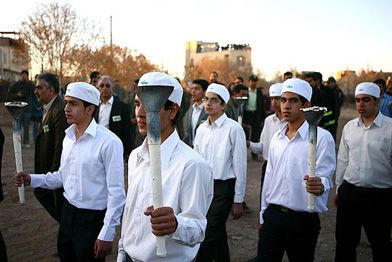
Youth carrying torches
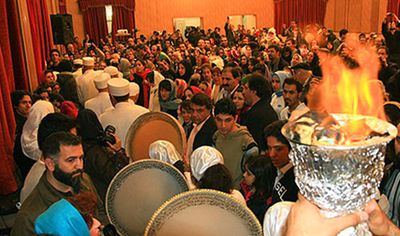
Iranian Zarathushthrian in Shiraz city in central Iran.People getting ready to walk behind
the Mobeds while carrying the brazier and torches and playing an Iranian traditional musical
instrument Daf (tambourine)
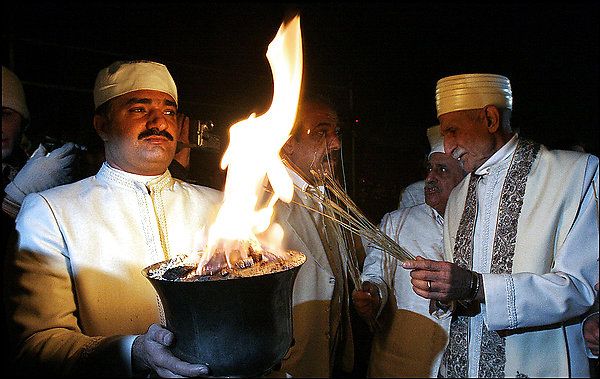
Sadeh celebration at Markar Center in Tehran,Iran
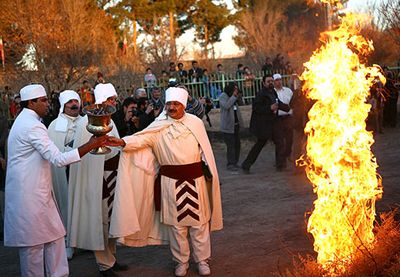
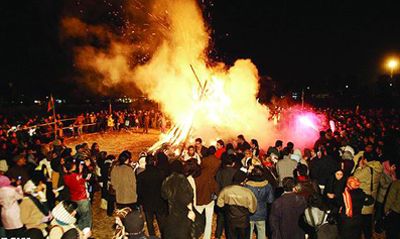
|